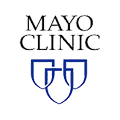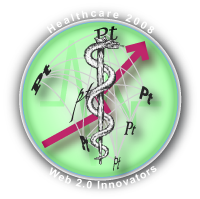Renowned Health Center Lets Patients and Employees Share Experiences in Facebook—Podcasts, a New Way to Leverage Multimedia
 Healthcare systems worldwide are criticized for falling short of expectations, and countries like the U.S. which feature aging populations, are rapidly approaching a crisis. Demand and cost will grow, but the system as currently structured will certainly break down unless radical changes are made. Web 2.0’s disruptive potential can be part of the remedy: we need to introduce much more accountability and collaboration into all parts of the system. We need to change the paternalistic attitudes that pervade the system, treat patients as active participants and encourage everyone to be more accountable. This series introduces healthcare Web 2.0 innovators.
Healthcare systems worldwide are criticized for falling short of expectations, and countries like the U.S. which feature aging populations, are rapidly approaching a crisis. Demand and cost will grow, but the system as currently structured will certainly break down unless radical changes are made. Web 2.0’s disruptive potential can be part of the remedy: we need to introduce much more accountability and collaboration into all parts of the system. We need to change the paternalistic attitudes that pervade the system, treat patients as active participants and encourage everyone to be more accountable. This series introduces healthcare Web 2.0 innovators.
Business Drivers
Mayo Clinic is literally a pioneer in that it was founded on the U.S. frontier in the 19th century. The world-renowned medical center has innovated many of the practices that evolved into the modern medical practice. It became organized as a nonprofit in 1919 and, as the Mayo Foundation, it has played a lead role in supporting medical education at the University of Minnesota Graduate School.
It may be natural, then, that Mayo Clinic began to pioneer the way in enabling patient-to-patient communication with Facebook, one of the most popular public Web 2.0 venues for many-to-many interaction in 2008. Mayo Clinic practitioners understand the power of word of mouth, which is embedded into its culture.
Summary of Web 2.0 Activities
Facebook Presence
 The Mayo Clinic Facebook page includes links to its websites for patients, practitioners and educators, but the focus is on Facebook’s social features. Lee Aase, Manager Syndications and Social Media at Mayo Clinic, comments, “This is a new reality and one way that people are communicating now and in the future. We need to be present.” The clinic’s Facebook page offers the same features as the pages of any individual: people can write on its wall and share all types of content. Any other Facebook member can become a “friend” or a “fan” of Mayo Clinic.
The Mayo Clinic Facebook page includes links to its websites for patients, practitioners and educators, but the focus is on Facebook’s social features. Lee Aase, Manager Syndications and Social Media at Mayo Clinic, comments, “This is a new reality and one way that people are communicating now and in the future. We need to be present.” The clinic’s Facebook page offers the same features as the pages of any individual: people can write on its wall and share all types of content. Any other Facebook member can become a “friend” or a “fan” of Mayo Clinic.
Mayo Clinic sees that Facebook can serve as a connection point for people to share stories about Mayo Clinic and the care they or their friends received. Aase says, “What we really hope to have people telling their own stories—describing what their experience was like here and connecting in that way.”
Therein lies the marketing angle. “When [patients] are telling their stories, their friends will see that and may be likely to check [us] out,” Aase says. “That’s like the word of mouth that happens over the back fence.” Mayo Clinic has never done advertising; word of mouth has always brought more new patients in the door.
The Facebook strategy also recognizes a truth that many organizations underestimate today. Employees are people, and people have high credibility with other people (customers). Some of the most active contributors on the Facebook page right now are employees, who communicate as people, not polished marketing or PR staff.
Podcasts
Mayo Clinic has been using podcasts to get the word out and offer education in bite-sized pieces since 2005, when it began listing podcasts on Apple’s iTunes Store, and its podcast once reached #29 in the Top 100.
The podcasts began as an outgrowth of Mayo Clinic’s educational TV programs that it had produced for local stations since 2000. They would interview physicians about certain conditions and treatments, and this offered small local stations the ability to offer medical and health content. In 2004, Mayo extended to a radio format. From there, it was a short hop to minute-long podcasts, which have a viral element because people can share podcasts very easily. In 2007, they began producing longer podcasts for niche audiences.
The podcasts have been so successful that Mayo Clinic Communications includes podcast planning in the overall production process for multimedia content. Previously they would repurpose radio and TV content and edit it down to a podcast format.
Thinking about ROI
Word of mouth is part of Mayo Clinic’s DNA. Employees and practitioners are focused on providing exceptional experience and letting people talk about it. There has never been an ROI for word of mouth and, for now, Mayo Clinic is not insisting on quantitative measures for its Web 2.0 investments. It has used a thought leadership-based approach to educate stakeholders and have its name associated with expertise.
This indicates that, the more things change, the more they stay the same. Web 2.0 and social media digitize word of mouth, the only kind of “marketing” that is as old as mankind. Because it is now digital, word of mouth is gaining the efficiency and reach of commercial marketing and advertising.
Aase summarizes, “Part of making these podcasts is creating general awareness and providing worthwhile information for people. It makes people think better of you, makes you top-of-mind as they are having serious medical conditions where they might want to seek a referral some place.” Old-fashioned? Yes. Leading edge? Yes.
Lessons Learned
- Mayo Clinic will continue to succeed because it is focused on the right things: providing superlative experience and relying on word of mouth from everyone in its ecosystem. Word of mouth is gaining more leverage every month as more people adopt Web 2.0.
- When employees are excited and can share their impressions in an open forum, that can serve as a strong catalyst for bringing customers into the mix. It also does wonders for recruiting and public relations. In healthcare, patients read employees’ comments and realize that these are people who can take care of them.
- Mayo Clinic’s experience shows that repurposing content can play an important part of launching a Web 2.0 program, although companies should not restrict themselves to that.

[…] A Health care Case Study […]
[…] “Mayo Clinic” case study and their experience with social system (such as Facebook and podcasting) I can […]
[…] are some benefits and risks are discussed in Mayo Clinic and […]
[…] I have discussed some benefits and risks of implementing enterprise 2.0 in organizations such as, Mayo Clinic and GM. In this week’s blog I will discuss some potential risks might happened or its already […]
[…] post Mayo Clinic: Healthcare Web 2.0 Innovator Case Study appeared first on Christopher S. Rollyson and […]